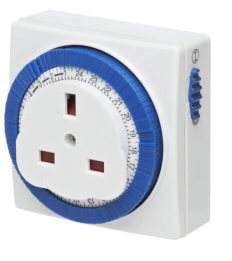Within the Estates department, we have been thinking about the new Embracing Sustainability strand of the University strategy
We’ve been looking at different areas within the University to see where we might be able to reduce our environmental impacts and operate more sustainably without impacting on the work of the University.
It’s no surprise that within Science & Technology energy use is quite high – when you’re working with cutting edge technology, machinery and equipment a certain degree of energy usage is inevitable! The challenge for us, working alongside S&T, is to find areas where we might be able to tackle this and reduce our carbon emissions and environmental impact.
We spoke to Adam Coburn, Sustainability Champion within S&T, to see what pointers he could give us. These conversations have been great and we now have some avenues we will pursue in partnership with S&T to tackle energy use.
That’s not all though! We wanted to find simple ways where staff and students working within S&T can also get involved in sustainability. We asked around within S&T and gathered 5 excellent top tips for S&T staff to try out!
Top Tips:
- Check out your glass dryers – these can use a lot of energy. Some newer models are insulated and have built-in timers but if your model isn’t, why not consider buying a cheap and easy to use ‘timer plug’ like this:

This way you’ll never forget to turn it off overnight.
- Consider aluminium beads for your water baths. They are more energy-efficient, easier to decontaminate and won’t turn into a nasty bacterial soup! Also, tubes will stand up without support, making your life much easier:

- Invest in water-free condensers. They are just as efficient as water condensers but won’t waste gallons of water and there’s no fear of floods. Your bench or fume cupboard will also be much clearer for you to work.

- Water chillers like the one pictured below re-use the same 8 litres of water/ethylene glycol mix for years. Again, no fear of floods and they can be set to lower temperatures than tap water will reach, meaning your rotary evaporation will be quicker and more efficient.

By making these tips part of your regular habits and routines you can have a really positive impact without creating extra work for yourself.
Thanks go to Adam and everyone in S&T for their ongoing help with Sustainability, we look forward to working together more in the future!
Don’t forget there are plenty of ways for you to get involved with sustainability at NTU – why not sign up to our Green Rewards platform via the mobile app or website? This allows you to report your green actions, earn points, compete against colleagues/departments and win prizes!
Want to know more or have any questions? Give the Sustainable Development Team a shout on sust.dev@ntu.ac.uk and follow us on social media on Twitter – @NTUEnvironment, Facebook and Instagram!
-Thank you to Dewi Howell who is a Sustainable Development Project Coordiantor at NTU, for writing this blog post!
Want to write a blog post that’s featured on this site? Email us your ideas today at GreenAcademy@ntu.ac.uk!

Great article, I enjoy getting information that actually benefits me and that I can implement in. my live. This article is similar but focuses on businesses. You should give it a read it’s very interesting https://www.valuer.ai/blog/aligning-business-with-sdg-7-by-collaborating-with-startups
LikeLike